The lower back is a complex and important part of the body. It provides support for the spine and facilitates mobility. However, it is also prone to injury. That’s why it’s important to exercise regularly to strengthen the lower back muscles.
Machine exercises are a highly effective and safe method of strengthening the lower back. They allow you to isolate the lower back muscles and focus on proper form. This helps to reduce the risk of injury.
This guide will tell you why machine exercises are good for your lower back and which machines you should look at in the gym.
We will also talk about the best exercises and how to create a lower back workout routine with a gym machine.
Want to take your gains to the next level? Discover your daily calorie needs with our free TDEE calculator

- How To Strengthen Your Lower Back With Machine
- 10 Best Lower Back Exercises With Machines
- 1. Back Hyperextension
- 2. Reverse Hyperextension
- 3. Glute Ham Raise
- 4. Seated Back Extension
- 5. Smith Machine Stiff-Legged Deadlift
- 6. Machine Hip Thrust
- 7. Smith Machine Good Morning
- 8. T-Bar Row
- 9. Cable Deadlift
- 10. Seated Cable Row
- Lower Back Machine Workout Plan
- 1. Beginner Level
- 2. Intermediate Level
- 3. Advanced Level
- Anatomy Of Lower Back Muscles
- 1. Erector Spinae
- 2. Quadratus Lumborum
- 3. Multifidus
- 4. Latissimus Dorsi
- Conclusion
- References
How To Strengthen Your Lower Back With Machine
Machines allow you to target all areas of the back muscles from multiple angles and through a full range of motion. By adjusting body position, weight load, and cable attachments, you can effectively alter your grip and activate your lower back muscles.
To structure an effective lower back workout on machines for building strength, mass and endurance, the number of reps and sets will depend on your current fitness level, workout frequency, and goals.
- For pure strength gains, do 4 to 6 sets of 1 to 6 reps for each exercise, using a weight of at least 85% of your one-repetition maximum (1RM). The lower the reps, the closer to 100% 1RM you should aim.
- If your priority is hypertrophy (muscle growth), perform 3 sets of 8 to 12 reps per exercise, with loads between 70-85% of your 1RM.
- For muscular endurance, higher reps (15-20) and moderate weights (50-70% 1RM) are recommended.
10 Best Lower Back Exercises With Machines
Whether you’re looking to correct muscle imbalances, straighten up your posture, or build up your strength. You must add these machine exercises to your back workout routine.
The 10 best machine lower back exercises to help you build a stronger, healthier back. These exercises include back extension, reverse hyperextension and smith machine deadlifts, and many more.
1. Back Hyperextension
The Back Hyperextension (HE) Machine is an essential piece of gym equipment specifically designed to target the muscles in your lower back. This machine is often found in both commercial and home gyms. It aims to strengthen your back and improve your posture.
For beginners and those recovering from an injury, the machine offers a safer alternative to free weights, since it provides a controlled range of motion. It’s a simple exercise to learn, so you can start using it right away.
Results showed that trunk extensions (HE) activated posterior chain muscles more than leg extensions, regardless of contraction type.
This suggests that while trunk extensions are effective for overall endurance, leg extensions may be better for lumbar muscle endurance.
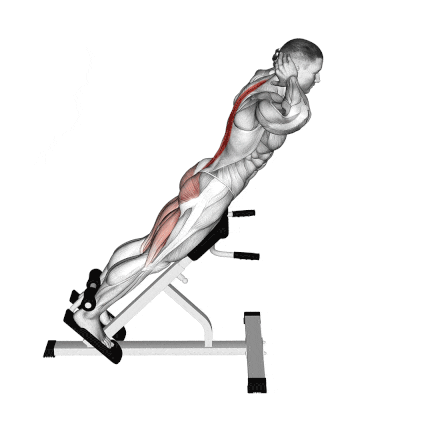
How To Do
- Lie face down on the back extension machine. Adjust the pad so that it supports your thighs and hips.
- Bend your knees slightly and secure your feet under the footplates. Keep your knees in line with your hips.
- Cross your arms over your chest or place your hands gently at the side of your head.
- Exhale and raise your upper body up until your shoulders, spine, and hips are in line. Engage your core and gently slide your shoulders back.
- Inhale as you lower yourself back to the starting position, ensuring a controlled movement.
- Do the exercise slowly and with control to improve stability and strength by activating specific muscles.
2. Reverse Hyperextension
The reverse hyperextension (RHE) or Leg extension is an exercise that targets the lower back muscles, particularly the erector spinae. It’s a multipurpose workout that can also strengthen the hamstrings, glutes, and hip flexors. It is low-impact and good for people with weak backs.
The study shows that RHE is a promising exercise for targeting low-back musculature and reducing stress on the lumbar spine.
If you’re new, you may start with just the weight of your legs or add minimal weight and increase as you become more comfortable.
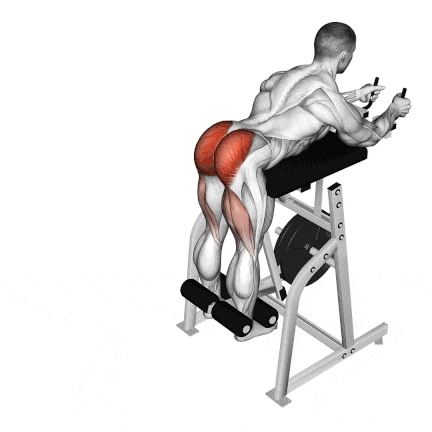
How to Do
- Lie facing downwards on the hyperextension machine, with your upper body and stomach on the bench. Secure your legs under the rollers.
- Allow your legs to hang towards the floor and grip the handles.
- Exhale and lift your legs up by contracting your glutes and lower back muscles.
- Your legs should form a straight line with your torso at the movement’s top.
- Lower your legs back to the starting position slowly and inhale as you do it.
- Aim for two or three sets of 8 to 15 reps
3. Glute Ham Raise
The glute ham raise is a bodyweight exercise that targets the lower back, glutes, hamstrings, and calves. It is typically performed on a Glute Ham Developer machine and is a staple in strength and conditioning programs.
The glute ham raise effectively targets the hamstrings during the eccentric (lowering) portion. The isometric contraction required to keep the spine neutral during the exercise also enhances lower back and spinal health.

How To Do
- The footplate and hip pad on the Glute Ham Developer machine should be adjusted to your height and comfort.
- Lie face down on the platform and grasp the handles at the sides of the platform.
- Position yourself so your knees are just behind the pad, and your feet are secured under the footplate.
- Keep your upper body straight from your knees to your head as you lower your upper body forward.
- Hold the position for a second, then slowly lower yourself back down to the starting position.
Tips
- Avoid hyperextending your back at the top of the movement. Keep a neutral spine to minimize risk.
- As you become more comfortable with the exercise, you can hold a weight plate to your chest to increase resistance.
4. Seated Back Extension
Seated Back Extension is a variation of the classic back extension exercise but performed in a seated position. This exercise uses a machine to help strengthen the muscles in the lower back, also called the lumbar region.
The seated position allows you to isolate your lower back muscles more effectively than some other types of back exercises. It provides a safer and more controlled way to work your lower back without putting undue stress on your spine.
There are several machine setup variations, but these differences in the backrest, footrest, leg clamps, or presence of handles for stabilization don’t affect the exercise much.
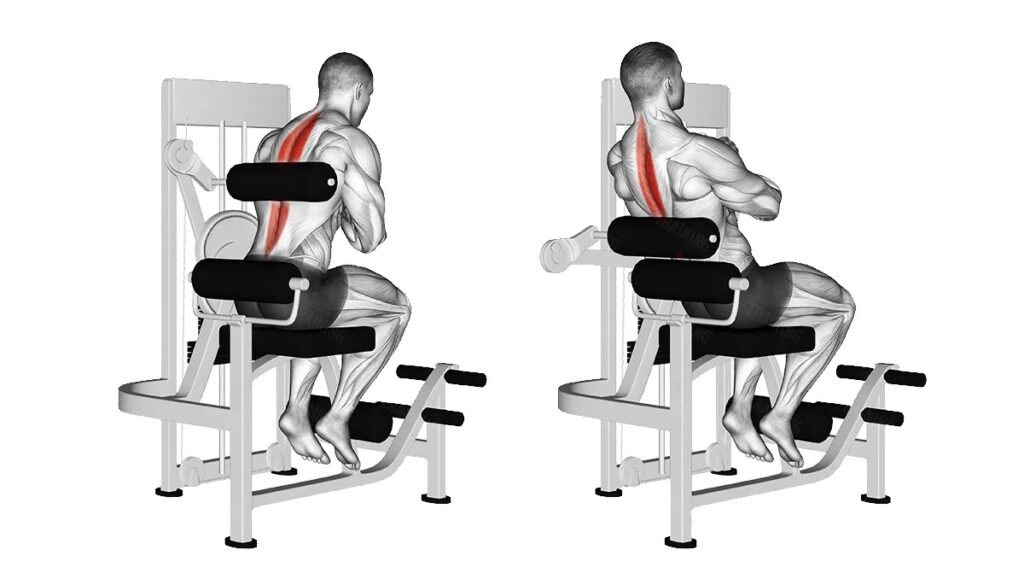
How To Do
- Adjust the machine so the roller pad is at your upper back when you are seated. Then, select an appropriate weight to use.
- Sit upright with your upper back pressed against the roller pad. Grip the handles at your sides.
- Keep your chest lifted, eyes looking forward, and plant your feet firmly on the footrests.
- Start the movement by extending your hips and lumbar spine and pushing the roller to the rear.
- Pause for a moment at the end of the range of motion.
- Inhale as you slowly return to the starting position with control.
- Make sure you perform the exercise slowly and carefully to avoid swinging your upper body.
5. Smith Machine Stiff-Legged Deadlift
If you’re looking for a straightforward lower back workout that you can do with a machine to build back strength, then stiff leg smith deadlift is a great staple exercise to get you started.
It is a variation of the deadlift and an exercise used primarily to target the muscles of the hamstrings and gluteals.
The stiff-leg deadlift for hamstrings requires a lighter weight than that used during traditional powerlifting for strengthening the lower back and legs.
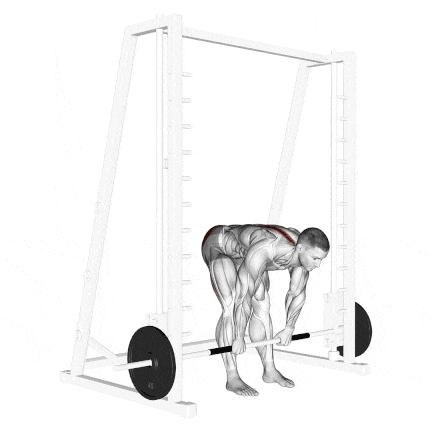
How To Do
- Set the Smith bar to thigh level and stand facing the barbell with your feet around shoulder width apart.
- Grab it with an overhand, shoulder-width grip. Keep your back straight, head up, and hips low, lift the barbell into a standing position.
- Flex your knees a little, push your hips backward, and slowly lower the barbell down the front of your legs.
- Lower the bar down as far as your hamstrings will let you comfortably. Now engage the hamstrings and begin to raise the bar straight back up.
6. Machine Hip Thrust
The hip thrust is a popular exercise that strengthens the glutes, hamstrings, and lower back muscles.
The machine hip thrust is a special piece of gym equipment that you use to do hip thrust exercises. It typically comprises a padded bench or platform attached to a sturdy frame.
The bench is set up horizontally, and the user sits with their upper back against the pad and their feet on the ground in front of them.
The hip thrust machine has advantages over the classic hip thrust:
- No need to balance a heavy barbell, allowing full focus on glute contraction
- More comfortable by removing pressure on the hip bones from the barbell.
- Fixed machine setup prevents shoulders from sliding off a bench.
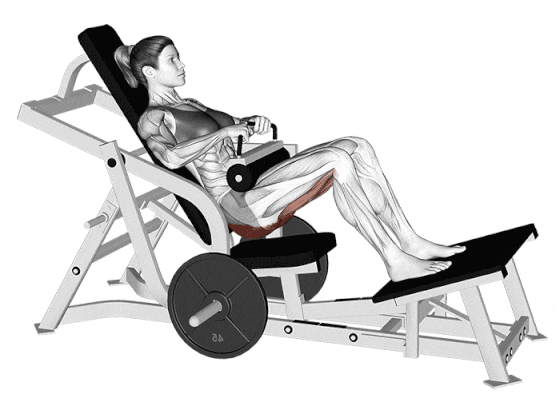
How To Use It
- Adjust the height of the bench or platform so that your shoulders are comfortably positioned against the pad.
- Your feet are flat on the platform in front of you.
- Sit on the bench with your upper back against the pad and your feet hip-width apart on the ground.
- Place a pad or weight across your hips (based on design).
- Drive through your heels and squeeze your glutes as you lift your hips upward.
- Pause briefly at the top of the movement, then lower your hips back down under control to complete one repetition.
7. Smith Machine Good Morning
Good Morning is a classic strength-training exercise that targets the lower back, hamstrings, and glutes.
When you do Good Morning on a Smith machine, the exercise becomes more focused and controlled, providing better isolation of lower back muscles (erector spinae).
The Smith Machine provides a guided bar path, making maintaining proper form easier. Start with light weight to get the form before increasing the load.
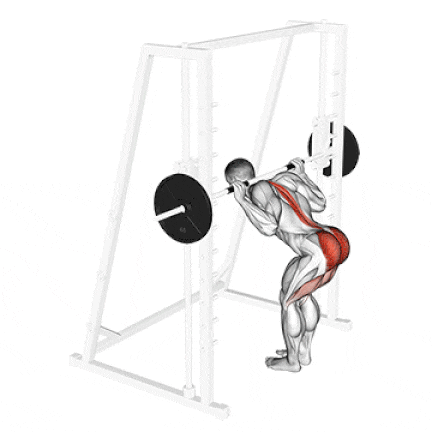
How To Do
- Set the Smith Machine bar at about chest height and load it with the appropriate weight.
- Stand facing away from the machine, feet shoulder-width apart. Put the bar over your upper traps and shoulders.
- Straighten up, lifting the bar off the hooks, and take a step or two backward. Keep your back straight and knees slightly bent.
- Lower your upper body forward from the hips. Go down until you feel a stretch in your hamstrings.
- Exhale as you lift your upper body back up to the starting position.
- Aim for two or three sets of 8 to 15 reps
8. T-Bar Row
If you are looking to add freshness and variety to your back workouts and give yourself a new challenge, try this landmine row exercise. It is a very beneficial and empowering exercise that strengthens the lower back.
Landmine rows are challenging, but they are essential for building a strong back, developing a quality physique, and staying injury-free for life.
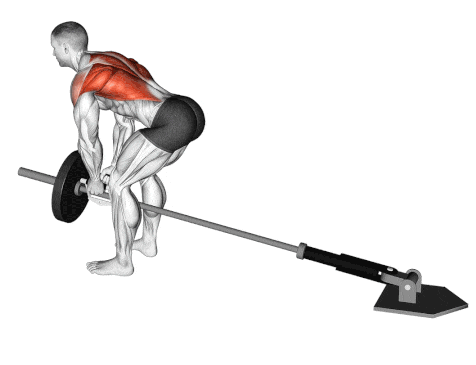
How To Do
- If you are using a classic bar, you must ensure that one of its ends is blocked by placing it in the corner of a wall. The ideal is to use a landmine machine or attachment.
- Make sure your set-up is secure before each exercise, especially if you are using a corner wall set up.
- Load the other end with the desired amount of weight. With the barbell loaded, stand over the bar with a wide stance.
- Get into a bent-over position with your spine straight and chest up.
- Bend at the hips and keep your back arched throughout the movement.
- Lift the bar until the bar touches your chest, keeping the back straight.
- Now, slowly lower the bar until it nearly touches the ground.
- To increase range of motion, use small discs, rather than Olympic discs with a large diameter.
9. Cable Deadlift
The cable deadlift is the best variation of the classic barbell deadlift and one of the best cable exercises for the lower back (posterior chain).
The deadlift exercise can be performed using a barbell, a pair of dumbbells and a cable.
One of the biggest benefits of using cable for deadlifts is that it offers a smooth, controlled motion. It also gives your muscles almost uninterrupted time under tension and a massive pump, which can help optimize muscle growth.

How To Do
- Attach two pulleys at the lowest setting on a cable machine.
- Make sure the cable pulley attachments are located close to each other.
- Hold on to the cable with each hand, you’ll lower your butt to the ground.
- Remember to keep your back as straight as possible. Contract your back and hamstrings.
- Raise the cable using your hamstrings and glutes.
- You should keep your legs slightly bent, your back straight, and your head looking up.
- Raise it to the point where your body is erect.
- Do not hyperextend your body as the weight shifts to the lumbar spine.
- Then, lower the cable slowly at a steady, slow pace by bending at the hips and then at the knees.
10. Seated Cable Row
Seated Cable Rows are an excellent cable exercise for building middle back muscles, and they also work on the lower back.
It focuses primarily on the muscles in your back, including the latissimus dorsi, rhomboids, and trapezius. It also engages your biceps and forearms as secondary muscles.
This back exercise is done on a cable rowing machine with separate handles, a grip position change, and muscle work involved.
- A pronated (overhand) grip targets the upper and middle trapezius.
- A neutral (thumbs up) grip hits the middle and lower trapezius.
- The supinated (underhand) grip switches the focus to the latissimus dorsi.
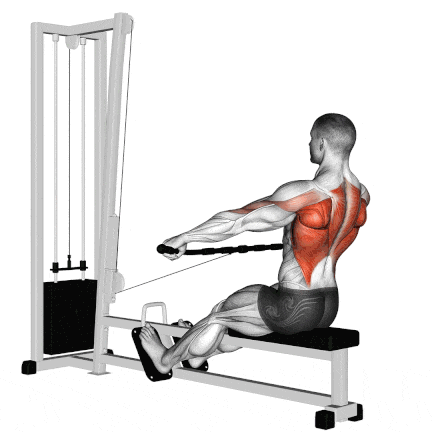
How To Do
- Sit down on the machine and place your feet on the footrests. Keep your knees slightly bent to avoid knee and lower back pressure.
- Grab the V-bar or wide grip handle and sit back with your arms fully extended.
- Keep your spine neutral and engage your core.
- Pull the cable towards your body, squeezing your shoulder blades together.
- Ensure your elbows are close to your body to maximize back muscle engagement.
- Hold for a second, then slowly release the cable to the starting position.
Lower Back Machine Workout Plan
Here are some workout routines for beginners, intermediate, and advanced levels.
1. Beginner Level
| Exercise | Sets | Reps |
|---|---|---|
| Standing Back Extension | 3 | 10-12 |
| Good Morning | 2 | 12-15 |
| Lat Pulldown | 2 | 12-15 |
2. Intermediate Level
| Exercise | Sets | Reps |
|---|---|---|
| Reverse Hyperextension | 3 | 8-10 |
| Seated Cable Row | 3 | 10 |
| Smith Good Morning | 3 | 10-12 |
| Back Extension | 2 | 12-15 |
3. Advanced Level
| Exercise | Sets | Reps |
|---|---|---|
| Glute Ham Raise | 4 | 6-8 |
| T-Bar Row | 4 | 6-8 |
| Smith Deadlift | 3 | 3-5 |
| Reverse Hyperextension | 2 | 15 |
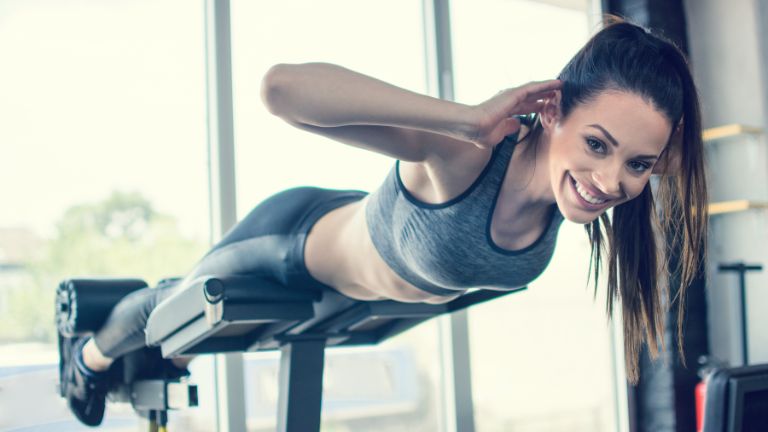
Anatomy Of Lower Back Muscles
The lower back is more than just a single muscle; it’s a complex system of interconnected muscles, tendons, and ligaments.
Two of the most prominent lower back muscle groups worth highlighting are the Erector Spinae and the Quadratus Lumborum.
This complex network of muscles that work together to support the spine, bend and twist the torso, and move the legs.
1. Erector Spinae
The Erector Spinae is not one single muscle, but a group of muscles and tendons running more or less parallel to the spine. These muscles extend from the lower back to the upper neck.
It is divided into three parts: the spinalis, iliocostalis, and longissimus. The erector spinae muscles help to extend the spine and to keep it upright.
The erector spinae are often the muscles that come to mind when we think of “back strength,” and they play a vital role in actions like lifting, pulling, and even simple tasks like standing up straight.
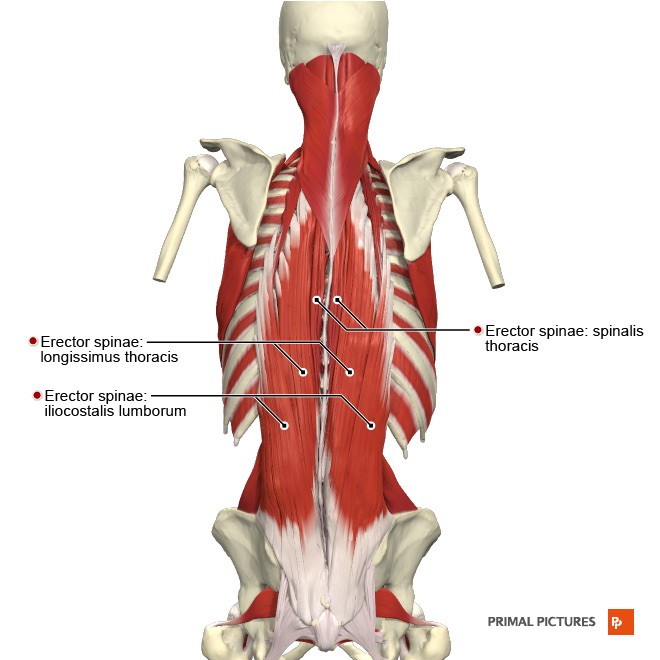
2. Quadratus Lumborum
The Quadratus Lumborum is a deep muscle that originates in the hip and attaches to the lower ribs and the lumbar spine.
This muscle is crucial for spinal stabilization and is heavily engaged in activities that require side-bending or hip hiking. It’s a muscle that’s often overlooked, but is vitally important for maintaining a healthy lower back and core.
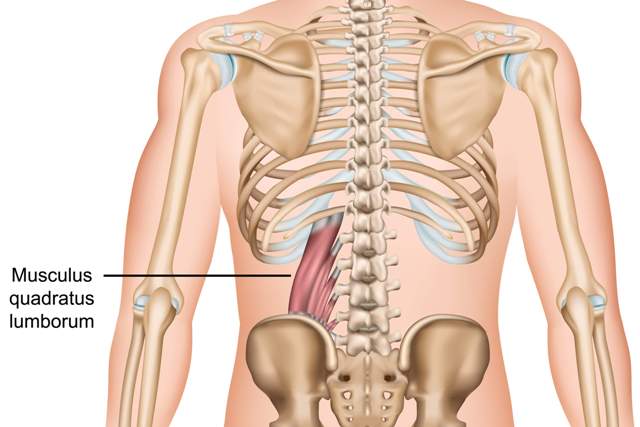
3. Multifidus
This muscle is located deep in the lower back and it runs along each side of the spine. It helps to stabilize the spine and to prevent it from moving too much.
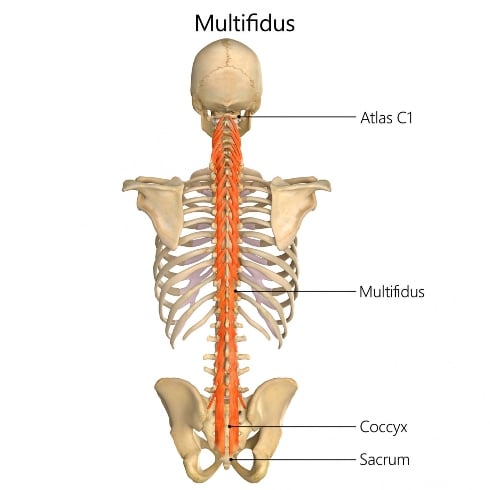
4. Latissimus Dorsi
This muscle is located in the upper back and it extends down to the lower back. It helps to extend the spine and to pull the arms down towards the body.
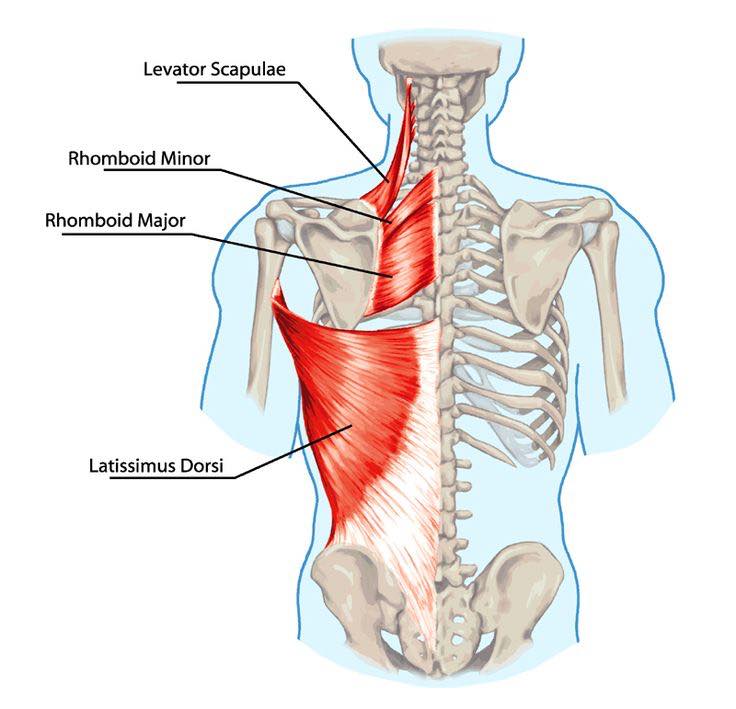
These are just some of the many muscles that make up the lower back.
Conclusion
Lower back machine exercises are a safe, effective way to strengthen the back muscles. Many lower back machine exercises are available, so you can find one that fits your needs and goals.
Exercises like back extensions, reverse hyperextensions, and seated back extensions are great for directly working the spinal erectors. Mix in glute ham raises to strengthen the posterior chain eccentrically.
Good mornings on the Smith machine will strengthen your hamstrings and glutes through an extended range of motion.
Use these lower back machine exercises to build a stronger, more resilient posterior chain.
References
- James Rainville, Carol Hartigan, Eugenio Martinez, Janet Limke, Cristin Jouve, Mark Finno: Exercise as a treatment for chronic low back pain. PMID: 14749199 DOI: 10.1016/s1529-9430(03)00174-8
- Rahman Shiri, David Coggon: Exercise for the Prevention of Low Back Pain: Systematic Review and Meta-Analysis of Controlled Trials: American Journal of Epidemiology, Volume 187, Issue 5, May 2018, Pages 1093–1101
- Suh, Jee Hyun MD; Kim, Hayoung BS; Jung, Gwang Pyo MD; Ko, Jin Young MD; Ryu, Ju Seok MD, PhD: The effect of lumbar stabilization and walking exercises on chronic low back pain: June 2019 – Volume 98 – Issue 26 – p e16173 doi: 10.1097/MD.0000000000016173
- Hartigan C. Exercise-based therapy for low back pain. https://www.uptodate.com/contents/search. Accessed April 19, 2023.
- Vigotsky AD, Harper EN, Ryan DR, Contreras B. Effects of load on good morning kinematics and EMG activity. PeerJ. 2015 Jan 6;3:e708. doi: 10.7717/peerj.708. PMID: 25653899; PMCID: PMC4304869.

Manish is a NASM-certified fitness and nutrition coach with over 10 years of experience in weight lifting and fat loss fitness coaching. He specializes in gym-based training and has a lot of knowledge about exercise, lifting technique, biomechanics, and more.
Through “Fit Life Regime,” he generously shares the insights he’s gained over a decade in the field. His goal is to equip others with the knowledge to start their own fitness journey.
